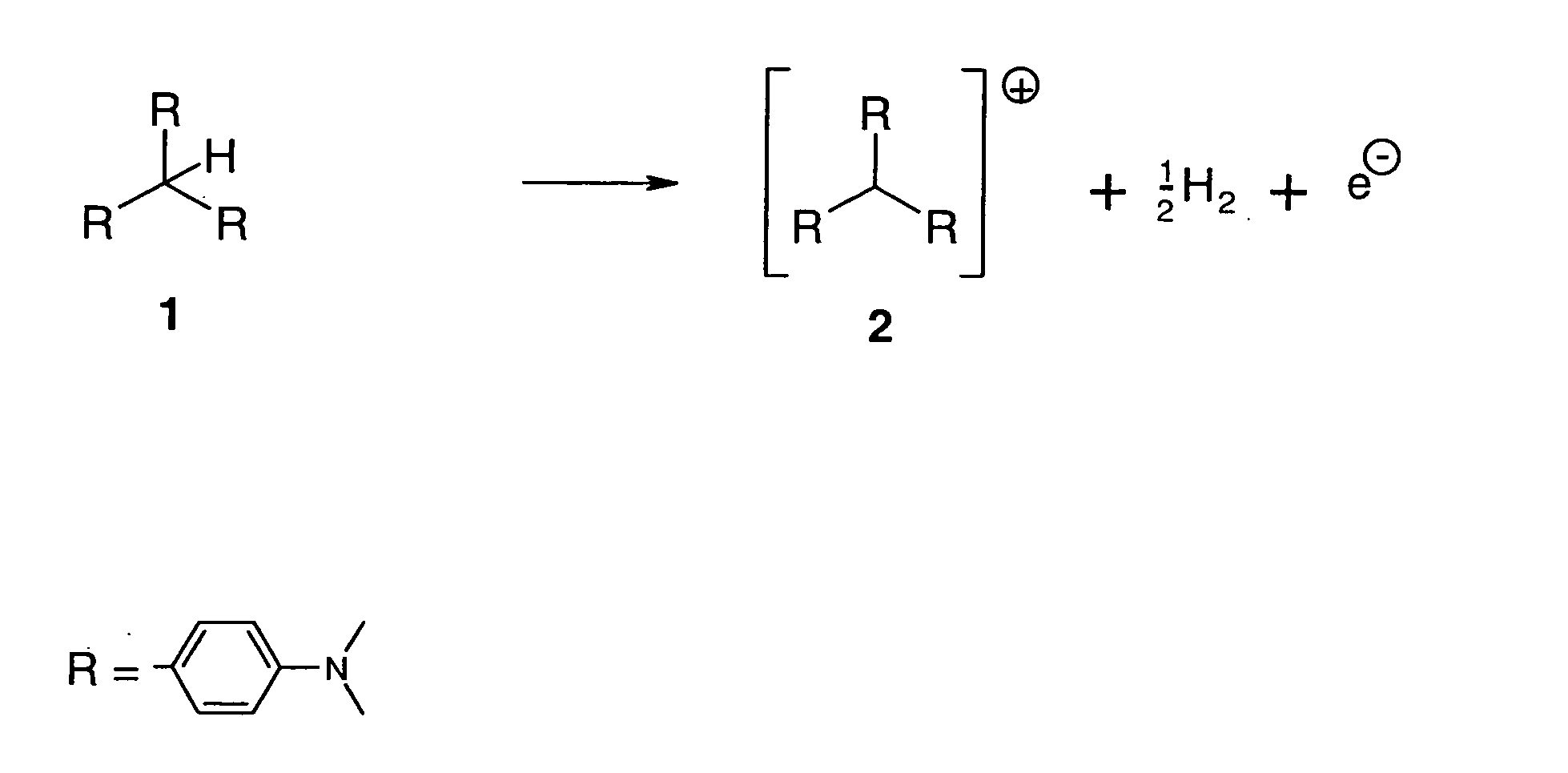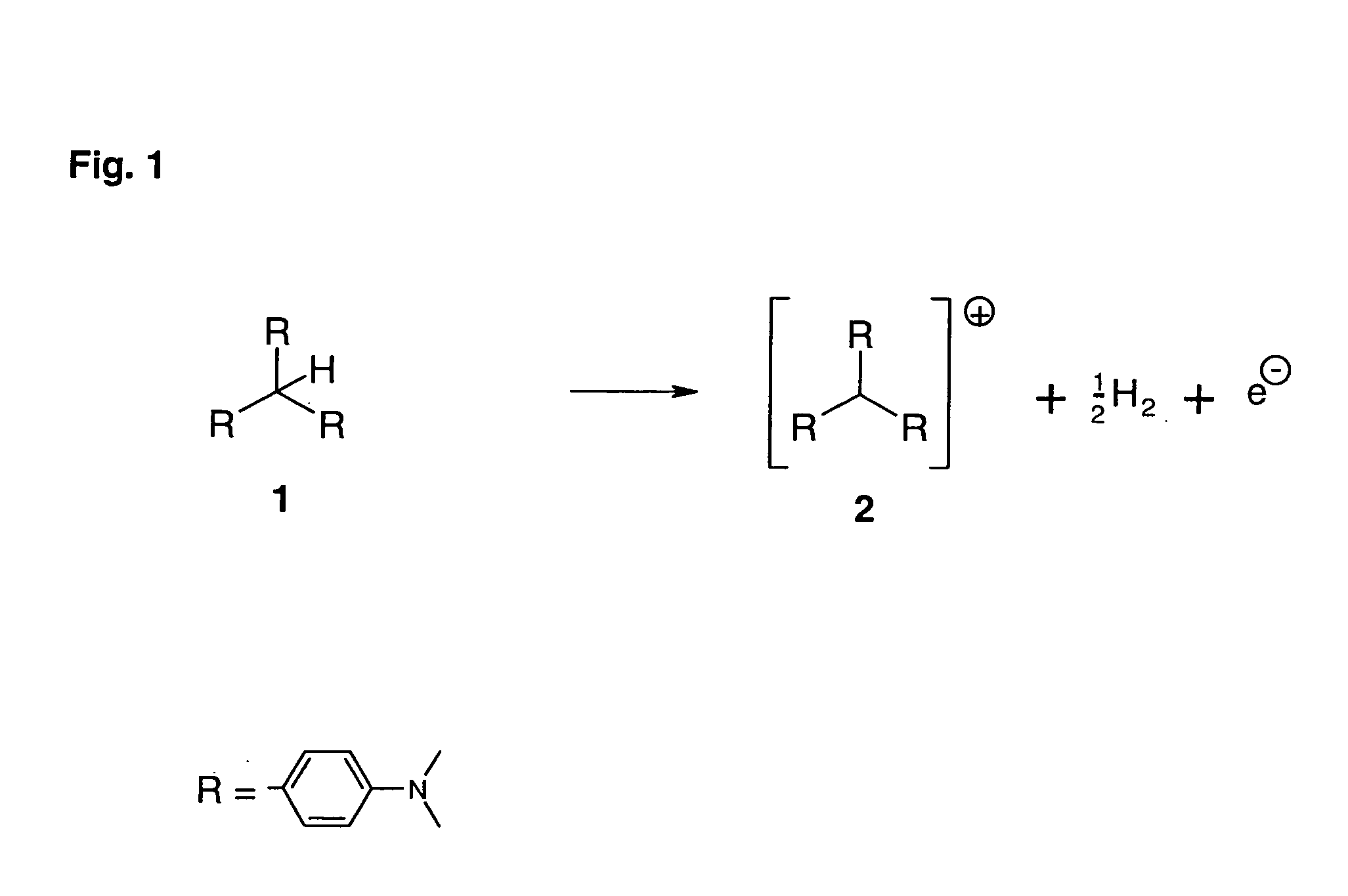Doped organic semiconductor materials and process for their preparation
a technology of organic semiconductor materials and semiconductor materials, applied in the direction of sustainable manufacturing/processing, final product manufacturing, and fluid protection, can solve the problems of limited sublimation ability of pyronine b chloride, low chemical stability, and difficult access, and achieve high luminescence quantum yield and quantum efficiency high. the effect of light yield
- Summary
- Abstract
- Description
- Claims
- Application Information
AI Technical Summary
Benefits of technology
Problems solved by technology
Method used
Image
Examples
Embodiment Construction
[0026] In an embodiment of the process of the invention to prepare doped organic semiconductors, Crystal Violet is used as cationic dye.
[0027] In a first step, the dye, present as the chloride salt and hence stable, is first sublimed. In this step, hydrogen chloride is liberated. The uncharged reduced form of Crystal Violet is obtained as its leuco base 1 in a small yield.
[0028] The leuco base 1 is a precursor substance, from which the donor 2 is obtained in a second step. In the absence of UV radiation, the Leuco Crystal Violet 1 is stable in air. Leuco Crystal Violet 2 has an oxidation potential of 0.7 V against SCE. In general, materials having oxidation potentials of more than 0.3 V against SCE are kinetically stable, i.e., they are inert in air. The inertness of Leuco Crystal Violet 1 in air has a direct advantageous effect on the simplicity of handling the precursor substance of the donor. Thus, the leuco base can be used directly in the doping process.
[0029] For this purpo...
PUM
| Property | Measurement | Unit |
|---|---|---|
| reduction potential | aaaaa | aaaaa |
| reduction potentials | aaaaa | aaaaa |
| charge carrier density | aaaaa | aaaaa |
Abstract
Description
Claims
Application Information
 Login to View More
Login to View More - R&D
- Intellectual Property
- Life Sciences
- Materials
- Tech Scout
- Unparalleled Data Quality
- Higher Quality Content
- 60% Fewer Hallucinations
Browse by: Latest US Patents, China's latest patents, Technical Efficacy Thesaurus, Application Domain, Technology Topic, Popular Technical Reports.
© 2025 PatSnap. All rights reserved.Legal|Privacy policy|Modern Slavery Act Transparency Statement|Sitemap|About US| Contact US: help@patsnap.com


